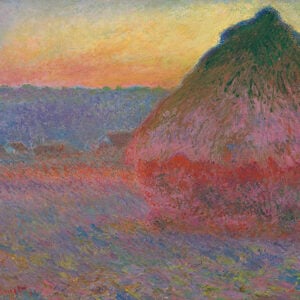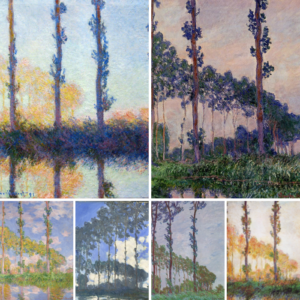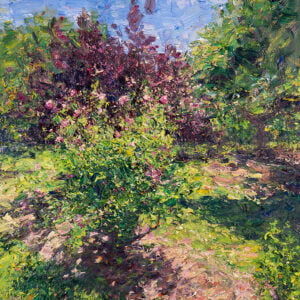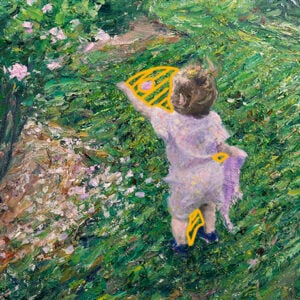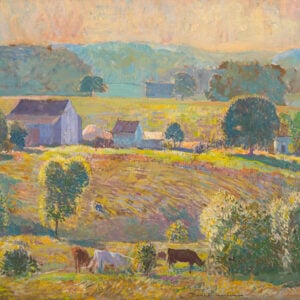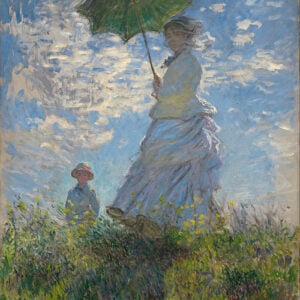Symbolism was a late 19th century movement whose artists communicated ideas through symbols instead of bluntly depicting reality. It was created as a reaction to art movements that depicted the natural world realistically, such as Impressionism, Realism, and Naturalism. In this post, I cover:
- Beginnings of Symbolism
- Key Facts of Symbolism
- Figurehead Artists of Symbolism
- Important Artworks
- Top Quotes
- Useful Resources
- Want to Learn More?
- Thanks for Reading!
Beginnings of Symbolism
Symbolism first appeared as a literary movement that opposed rationalism and materialism that dominated Western culture in the late 19th century. The beginnings of the movement can be traced back to 1886 when writer Jean Moreas published his famous Symbolist Manifesto.
The manifesto proclaimed that every person, natural element and object should be used to represent a symbol of a deeper idea or emotion. Moreas believed that, rather than replicating reality, artists should suggest it with symbols. Though it began as a literary movement, Symbolism was quickly adopted by a group of young visual artists who followed its rules.
Symbolist artworks are marked with unmodulated colors, broad brushwork and flat, abstract forms. It’s important to mention that Symbolists were a loose group of artists who had different artistic styles and techniques. But they all emphasized the importance of imagination and emotions over realism and rationalism, which made them members of the Symbolists movement.
And while Gustave Moreau painted detailed ornamental paintings inspired by mythology, Odilon Redon painted surrealist black and white drawings of body parts. James Ensor created a unique style based on grotesque, distorted figures. The art of Gustav Klimt and Edvard Munch combined Symbolism with Art Nouveau and Expressionism.
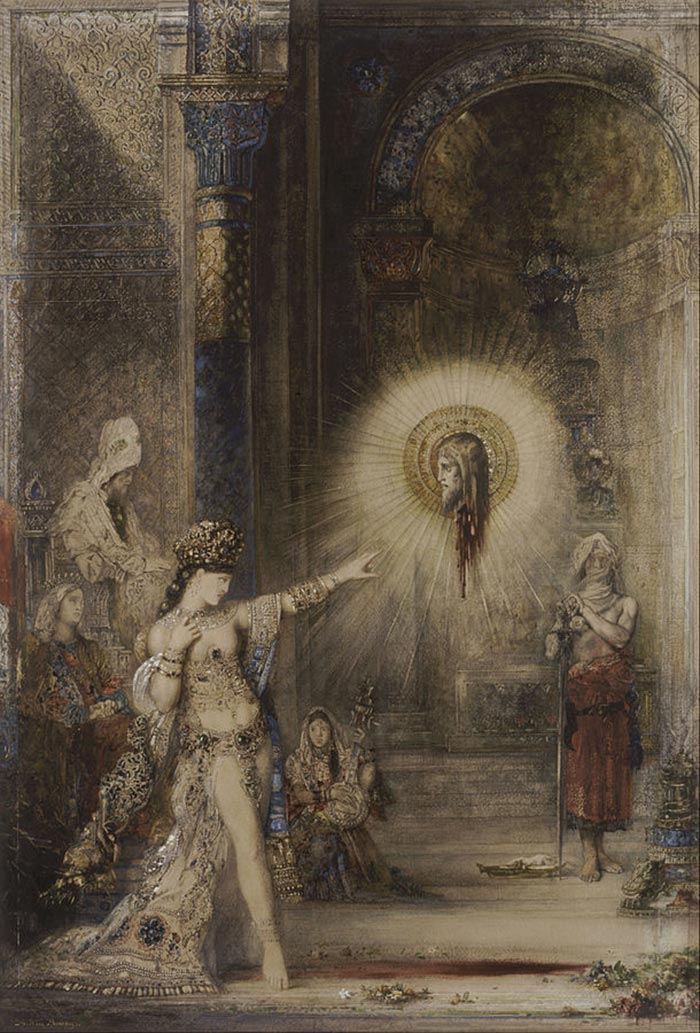

Key Facts of Symbolism
- Instead of depicting their immediate reality, the Symbolists expressed emotions, thoughts and fantasies. Symbolists were looking for an escape from their everyday life. They found a sanctuary in their personal beliefs, fantasies, mythical and biblical stories. Love, erotism, sex, but also fear, decadence, death, and the occult are often featured in the Symbolists works.
- Most Symbolist painted in wide strokes of unmodulated color creating flat, abstract figures and forms. The technique was popularized by Puvis de Chavannes, who used highly simplified forms to express abstract ideas articulately.

- German philosopher von Schelling and Sigmund Freud raised the interest in the subconscious that greatly influenced the movement. Inspired by psychoanalysis, Symbolists often portrayed the subjects’ inner life. In the artwork Oedipus and the Sphinx, for example, the subjects’ mutual gaze serves as the symbol of introspection, the necessity to look inside oneself.

- The women became preferred subjects for expressing emotions. The portrayal of women was limited to extremes – they were depicted either as femme fatale or capricious virgins. Gustave Moreau often painted women as murderers and man-eating sphinx. He even painted a whole series of artworks inspired by Salome who ordered the decapitation of John the Baptist. The idea of alluring but dangerous women was appealing to most Symbolists, and it was a common motif in both literature and art of the time.
Figurehead Artists of Symbolism
- Gustave Moreau
- Odilon Redon
- Paul Gauguin
- Arnold Bocklin
- Pierre Puvis de Chavannes
- Edvard Munch
- Max Klinger
- Gustav Klimt
- Ferdinand Hodler
Important Artworks
Gustave Moreau: Jupiter and Semele (1895)
One of the most famous artworks of Gustave Moreau portrays the love affair between Greek god Jupiter and Semele. As Semele makes love to Jupiter she becomes consumed by his light that’s represented on the piece by the crown with thunderbolts. The artwork symbolizes the human merging with the divine that happens after death. The composition that’s rich in detail and colors skilfully interweaves the themes of death, lust and resurrection.

Gustave Moreau: Orpheus (1865)
For his 1865 masterpiece, Gustave Moreau once again found inspiration in Greek mythology. This particular artwork depicts the myth of Orpheus who was dismembered by the worshipers of Dionysus. The ambiguities of the artwork are contained in the presence of the young woman. At first glance, she seems to be morning the death of Orpheus. But upon closer inspection, you’ll notice her bare feet that suggest that she could be one of his killers.
The portrayal of woman as femme fatale is one of the key elements of Symbolist aesthetics. Many Symbolists were fascinated by the idea of a dangerous female. The two faces mirroring one another is also a common motif that symbolizes psychoanalysis and introspection.

Jan Toorop: The Three Brides (1893)
In Jan Toorop’s 1893 artwork the painter uses silhouettes of brides as symbols of three states of the soul. The bride in the center represents innocence. She’s torn between the spiritual (represented by Madonna-like bride on the left), and the evil (the satanic bride adorned with skulls). The artwork is packed with a variety of symbols including the bed of thorns – that symbolizes the difficulties of existence and bowl of blood – the symbol of passion. What separates Toorop from other Symbolists is the fact that he found a main mystical inspiration for his work in non-Western sources. The Three Brides and their servants with elongated arms are based on Javanese puppet theatre.

Top Quotes
“Fantasy is also the messenger of the unconscious. Nothing in Art is achieved by will alone. It is achieved by docilely submitting to the subconscious.” Odilon Redon
“I believe neither in what I touch nor what I see. I only believe in what I do not see, and solely in what I feel.” Gustave Moreau
“I have never looked for dream in reality or reality in dream. I have allowed my imagination free play, and I have not been led astray by it.” Gustave Moreau
“I am dominated by one thing, an irresistible, burning attraction towards the abstract.” Gustave Moreau
“To simplify, that is to release the thought; the simplest conception proves to be the most beautiful.” Pierre-Cécile Puvis de Chavannes
Useful Resources
Books:
Gibson, Michael, Symbolism
Facos, Michelle, Symbolist Art in Context
Cooke, Peter, Gustave Moreau: History Painting, Spirituality, and Symbolism
Lucie-Smith, Edward, Symbolist Art
Videos:
Symbolism (Art Movement) Documentary
What is Symbolism? Art Movements & Styles
Websites:
Want to Learn More?
You might be interested in my Painting Academy course. I’ll walk you through the time-tested fundamentals of painting. It’s perfect for absolute beginner to intermediate painters.
Thanks for Reading!
I appreciate you taking the time to read this post and I hope you found it helpful. Feel free to share it with friends.
Happy painting!
Dan Scott

Draw Paint Academy

